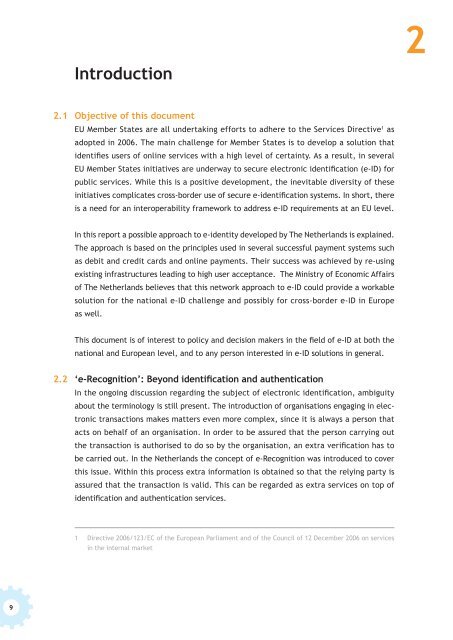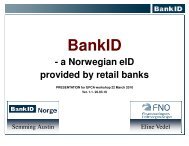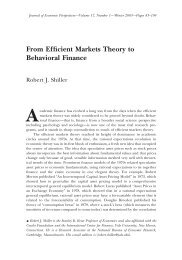A Network Approach to E-identification
A Network Approach to E-identification
A Network Approach to E-identification
- No tags were found...
You also want an ePaper? Increase the reach of your titles
YUMPU automatically turns print PDFs into web optimized ePapers that Google loves.
2<br />
Introduction<br />
2.1 Objective of this document<br />
EU Member States are all undertaking efforts <strong>to</strong> adhere <strong>to</strong> the Services Directive 1 as<br />
adopted in 2006. The main challenge for Member States is <strong>to</strong> develop a solution that<br />
identifies users of online services with a high level of certainty. As a result, in several<br />
EU Member States initiatives are underway <strong>to</strong> secure electronic <strong>identification</strong> (e-ID) for<br />
public services. While this is a positive development, the inevitable diversity of these<br />
initiatives complicates cross-border use of secure e-<strong>identification</strong> systems. In short, there<br />
is a need for an interoperability framework <strong>to</strong> address e-ID requirements at an EU level.<br />
In this report a possible approach <strong>to</strong> e-identity developed by The Netherlands is explained.<br />
The approach is based on the principles used in several successful payment systems such<br />
as debit and credit cards and online payments. Their success was achieved by re-using<br />
existing infrastructures leading <strong>to</strong> high user acceptance. The Ministry of Economic Affairs<br />
of The Netherlands believes that this network approach <strong>to</strong> e-ID could provide a workable<br />
solution for the national e-ID challenge and possibly for cross-border e-ID in Europe<br />
as well.<br />
This document is of interest <strong>to</strong> policy and decision makers in the field of e-ID at both the<br />
national and European level, and <strong>to</strong> any person interested in e-ID solutions in general.<br />
2.2 ‘e-Recognition’: Beyond <strong>identification</strong> and authentication<br />
In the ongoing discussion regarding the subject of electronic <strong>identification</strong>, ambiguity<br />
about the terminology is still present. The introduction of organisations engaging in electronic<br />
transactions makes matters even more complex, since it is always a person that<br />
acts on behalf of an organisation. In order <strong>to</strong> be assured that the person carrying out<br />
the transaction is authorised <strong>to</strong> do so by the organisation, an extra verification has <strong>to</strong><br />
be carried out. In the Netherlands the concept of e-Recognition was introduced <strong>to</strong> cover<br />
this issue. Within this process extra information is obtained so that the relying party is<br />
assured that the transaction is valid. This can be regarded as extra services on <strong>to</strong>p of<br />
<strong>identification</strong> and authentication services.<br />
1 Directive 2006/123/EC of the European Parliament and of the Council of 12 December 2006 on services<br />
in the internal market<br />
9
















